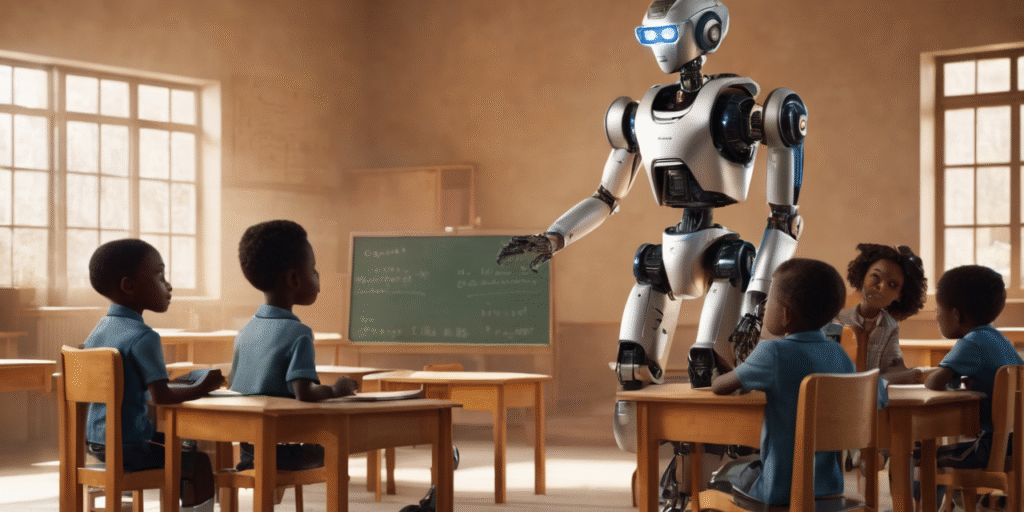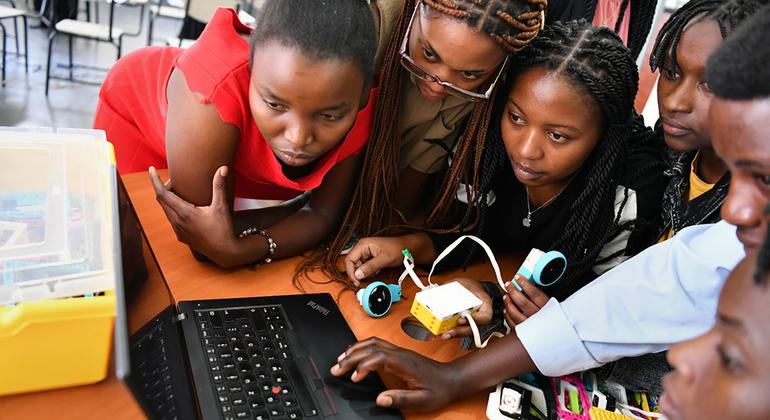Artificial intelligence is swiftly transforming education worldwide—but amid this evolution, Africa stands at a critical crossroads. The continent cannot afford to be left behind. Moyo Orekoya, co‑founder of the AI‑powered teaching platform Shepherd, is sounding the alarm: Africa must seize this revolution, particularly within classrooms, or risk a widening educational and technological divide arXiv+5Punch+5Punch+5.
Table of Contents

Shepherd: AI Tailored for African Classrooms
Shepherd is designed with African educators and learners in mind. Orekoya emphasises its ability to deliver personalised learning, adaptively guiding students based on their strengths and challenges. In environments where teacher quality and resources vary greatly, such tools offer vital support.
Personalisation is critical. Shepherd uses AI to assess student performance in real time, offering targeted feedback and scaffolding lessons to match individual pace. This significantly lightens the burden on overstretched teachers and enhances learning outcomes, in line with global research underscoring AI’s promise for individualised instruction in low-resource settings.
Tackling Real Classroom Challenges
Africa faces a persistent educational deficit: overcrowded classrooms, outdated curriculum delivery methods, and large student-to-teacher ratios. AI-driven tools like Shepherd can help address these systemic issues.
By automating routine assessment, Shepherd offers immediate insights into student progress. Teachers can then devote their limited time to designing richer lessons or offering one-on-one guidance. Shepherd also supports first‑language learning, inclusive education for learners with disabilities, and curriculum localisation—all key considerations in Africa’s diverse linguistic landscape.
Empowering Educators, Not Replacing Them
Orekoya is clear that AI isn’t a replacement for teachers—it’s a complement. Shepherd is built to empower educators, providing tools that make lesson planning more efficient and diagnostics more accurate.
This aligns with expert consensus that maximum learning gains occur when teachers are partners in the AI loop, not bypassed. When teachers are central to AI initiatives—from design to deployment—classroom adoption improves dramatically.
Evidence in Action: Early Wins
While Shepherd itself is early stage, similar AI‑based programs have delivered measurable results across Africa:
- In Ghana, the Rori chatbot tutor—accessible via WhatsApp—helped grade 3–9 students improve math performance (effect size ~0.37) over eight months, using low‑bandwidth devices.
- Kwame for Science, deployed across West Africa, served 750 users asking over 1,500 science questions. It showed top‑3 answer accuracy of 87.2%, demonstrating its ability to support students at scale.
- Broader projects supported by IDRC, AI4D, GPE‑KIX and national Ministries have applied AI to create textbooks in local languages, assist learners with disabilities, and train policymakers on AI competencies—highlighting systematic alignment with Africa’s Continental AI Strategy.
Together, these initiatives affirm that context-aware, ethically guided AI tools can be both effective and equitable in African educational contexts.

Toward a Responsible AI Agenda in African Education
Realising AI’s full potential in Africa requires infrastructure, policy, and human capacity. IDRC’s recent work emphasises:
- building AI competency frameworks for teachers and students,
- formulating national EdTech and AI policies,
- integrating AI literacy into teacher training,
- and promoting local, culturally-grounded innovations.
Orekoya and other innovators urge that Shepherd and similar platforms be developed responsibly, embedding ethics, data privacy, linguistic diversity, and accessibility from the ground up.
What Needs to Happen Now
To make AI in classrooms a widespread reality in Africa, several priorities must align:
1. Investment and Infrastructure
Reliable electricity, affordable devices, and stable internet access remain uneven across the continent. AI platforms like Shepherd must support offline or low-data modes. Public-private impact funding should accelerate infrastructure deployment across rural and underserved schools.
2. Teacher Training and Ownership
Teachers need training on AI tools—not just how to click buttons, but how to interpret data-driven insights and adapt teaching accordingly. Ongoing professional development and co-design processes improve trust and pedagogical integration.
3. Policy and Governance
National education authorities must create AI-friendly policies: clear standards for data protection, equity frameworks for classroom AI use, and guidelines ensuring alignment with national curricula and languages.
4. Localised, Scalable Innovation
Solutions like Shepherd must be grounded in African realities. Tools built for Ghana may not automatically work in Nigeria, Kenya, or Mali. Localisation—linguistic, cultural, curricular—is essential for legitimacy and impact.
5. Long-Term Impact Research
Sustained evaluation is key. Ghana’s Rori study showed promising short-term gains; Shepherd and other platforms should aim for longitudinal studies measuring retention, progression, and student resilience.
Why It Matters: Equity, Economy, and Future Readiness
Africa has missed previous industrial revolutions—web, broadband, smartphones —but AI presents a new inflection point. Access to AI-powered education can help:
- Close equity gaps between urban and rural, high- and low-income schools.
- Build digital literacy and problem-solving skills necessary for future jobs.
- Empower learners in local languages, helping preserve heritage while advancing education.
- Fuel economic development, with a more skilled workforce ready for data-intensive roles.
Orekoya believes Shepherd is part of this transformative generation of tools that can accelerate Africa’s leapfrogging into an AI-empowered future.

Classroom Voices: Teacher-Centred AI
While Shepherd is teacher-empowering by design, frontline educators report similar tools reduce admin load, help them identify struggling students earlier, and integrate interactive content more easily. Teachers appreciate having AI as an ally rather than overshadow.
This resonates with global findings: educators are more likely to adopt AI platforms when they retain pedagogical agency and can provide feedback to developers—a virtuous circle of improvement and teacher agency.
A Vision for Africa’s Classroom Future
Imagine a classroom in Nigeria, Ghana, Kenya, or Uganda where:
- A student logs into Shepherd on a basic tablet.
- Shepherd adapts the lesson to her current level—perhaps in math or science—providing dynamic exercises.
- The teacher receives an AI-generated report highlighting topic areas needing attention.
- Educators adjust group activities accordingly; brighter learners are challenged, and struggling learners get targeted support.
- The software works offline when electricity or the internet fails.
- Instructions, assessments, and feedback appear in local languages or dialects, increasing learner comfort and comprehension.
This isn’t a futuristic dream—it’s achievable today through tools like Shepherd, Rori, Kwame and companion innovations.
The Path Forward: Act Now
Africa’s educational systems are navigating heavy challenges: teacher shortages, outdated learning materials, motivation gaps, pandemic-related learning loss, and resource inequality.
AI-powered platforms offer a compelling, scalable solution—but only if implementation is intentional, inclusive, and collaborative. Shepherd co‑founder Orekoya urges urgency—not just in tech adoption, but with a vision: anchored in teacher empowerment, localised design, data privacy, and sustained investment.
Failing to act means putting an entire generation of young learners at risk of being left behind as the world embraces AI-augmented education.
Conclusion
Africa stands at the threshold of a transformative moment in education. Platforms like Shepherd, developed by local innovators, offer a hopeful blueprint for decades of opportunity to come. By aligning policy, investment, teacher training, infrastructure, and cultural localisation, African countries can—and must—ensure that their students are at the centre of the AI revolution in classrooms.
This is more than a technological shift—it’s a chance to write a new chapter in African education, one where learners everywhere have access to personalised, inclusive, and empowering instruction powered by AI.





